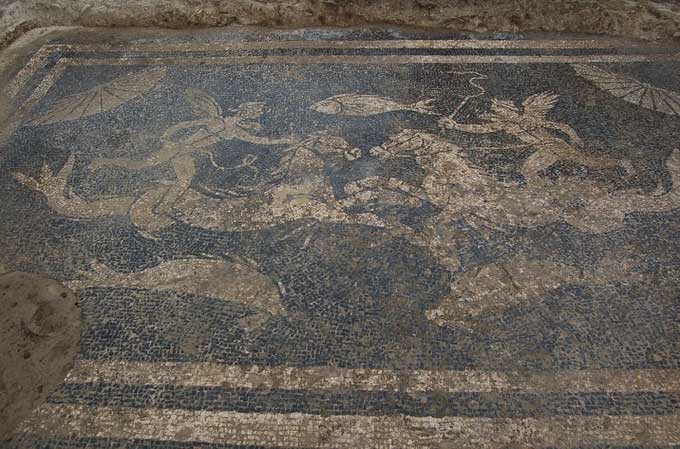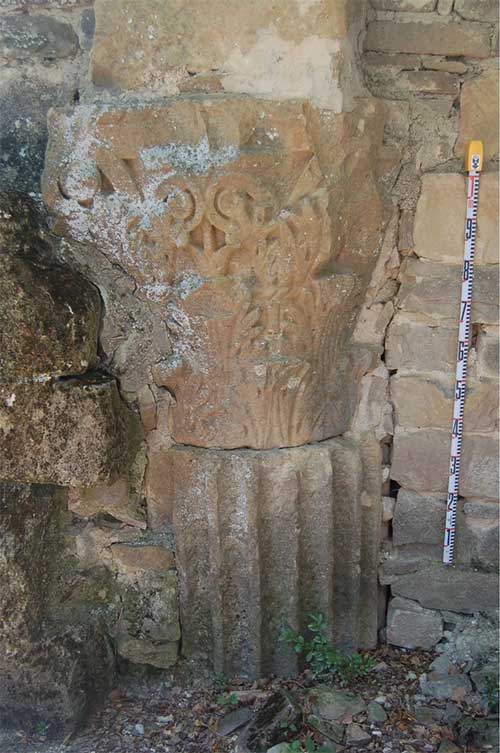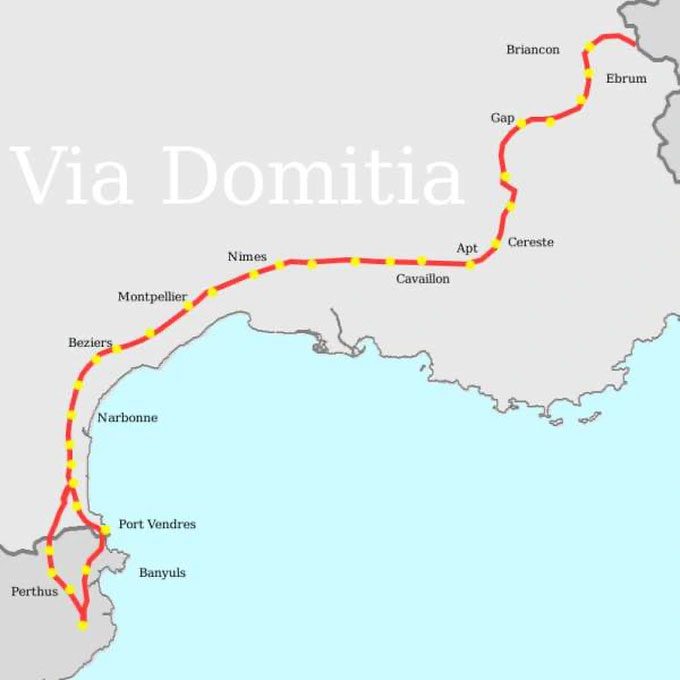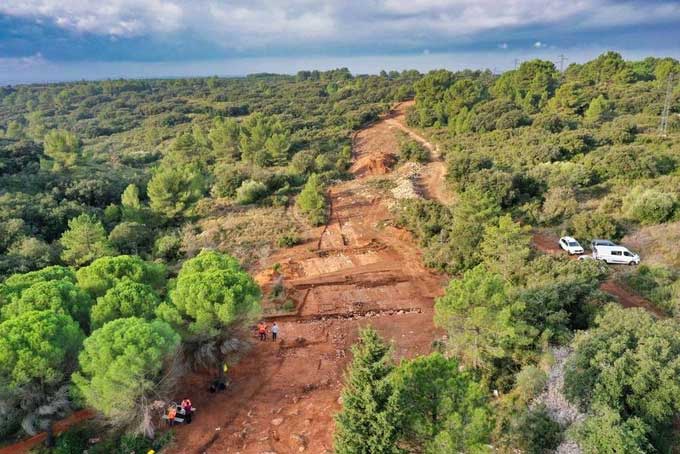Recent archaeological discoveries in the Pyrenees have uncovered an ancient Roman imperial city and a segment of the Via Domitia road.

The Pyrenees is the border between France and Spain. (Photo: Futura Sciences).
According to reports, archaeologists have discovered an ancient Roman imperial city in northern Spain and one of the largest sections of the “Domitian Road”, an ancient route crossing southern Gaul (modern-day France).
The Pyrenees (located between France and Spain) present a challenge for archaeologists, as this region has witnessed the development of various cultures throughout history.
Over 800,000 years ago, the presence of Homo species has been confirmed by remains found in Atapuerca, northern Spain. Since then, the Pyrenees have been continuously inhabited during the Paleolithic era.

Detail of a black and white mosaic discovered in 2021 at the Forau de la Tuta site (Photo: Arquitectura Viva).
Only in the Neolithic period, when humans became more sedentary, did their presence become a constant, evidenced by numerous remains found at the foot of the Pyrenean mountains.
During the Roman period, the Pyrenees were occupied by Celtic tribes, where many interactions occurred between these two peoples, initially peaceful but increasingly hostile until the Gauls conquered the region in the 2nd century BC.
From then on, cities and roads were built in the Roman style, and traces of this period remain to this day.
Two Overlapping Cities from Roman to Medieval Times
Recent excavations of an archaeological complex conducted by scientists from Zaragoza, Spain, have revealed Roman-era remains.

A Corinthian-style decorative column, one of the orders of classical architecture found in the San Pedro de Artieda crypt (Photo: Arquitectura Viva).
In a series of studies, they uncovered details of these surprising discoveries. Specifically, in the area near the Aragon River in northern Spain, scientists found remnants of ancient buildings.
Initially, they believed these belonged to different complexes, but deeper excavations revealed that all these buildings formed a city dating back to the first two centuries of our era.
Surprisingly, there are no historical records mentioning such a city! The layout and complexity of the discovered elements indicate that it was a bustling city.
Archaeologists identified several streets, sidewalks, drainage systems, and a marble hand from a public monument. According to El Pais, researchers have attributed these findings to the architectural style “at the end of the 1st century”, during the late Flavian or early Antonine period.
Additionally, they observed that a medieval village was built on top of the Roman ruins, dating from the 9th century and occupied until the 13th century. This village is documented in historical texts and is referred to as Artede, Arteda, Artieda, or Arteda Ciuitate in various works.
Moreover, studying the tombstones found in the cemetery and the marble hand will reveal more about the complex history of this archaeological site.
The Domitian Road Through Southern France
This is not the only recent discovery that demonstrates Roman occupation in the Pyrenees! During this period, roads were constructed, and traces of them still exist today.

Map of the Domitian road. (Photo: TL Mile).
Notably, the Domitian Road, or Via Domitia, was initiated in 118 BC. It connected Rome to Spain, passing through Narbonne in Gaul.
Researchers from Inrap have discovered a portion of it! The newly revealed section connects the Rhône River to the Pyrenees. Although this route is well-known due to its extensive mention in literary works, very few in-depth studies have been conducted on the Via Domitia, particularly regarding its construction process and purpose.

Archaeological research conducted on the Domitian road from above. (Photo: Pascal Druelle).
Studies show that the traffic on this road was approximately 18 meters wide, divided into multiple lanes. Additionally, numerous artifacts related to transport shipments, such as coins and valuable antiques from Marseille, were found.
Documents indicate that the use of this route can be dated from the 2nd century BC to the 4th century AD.





















































